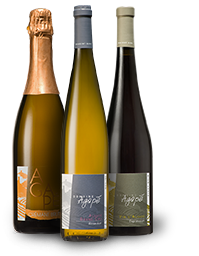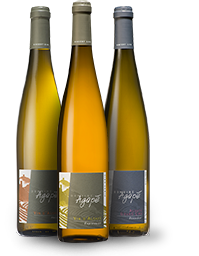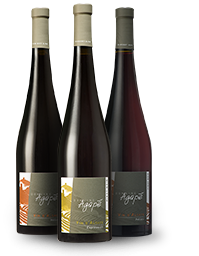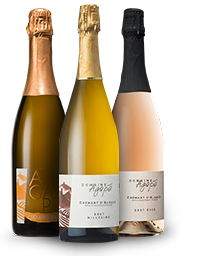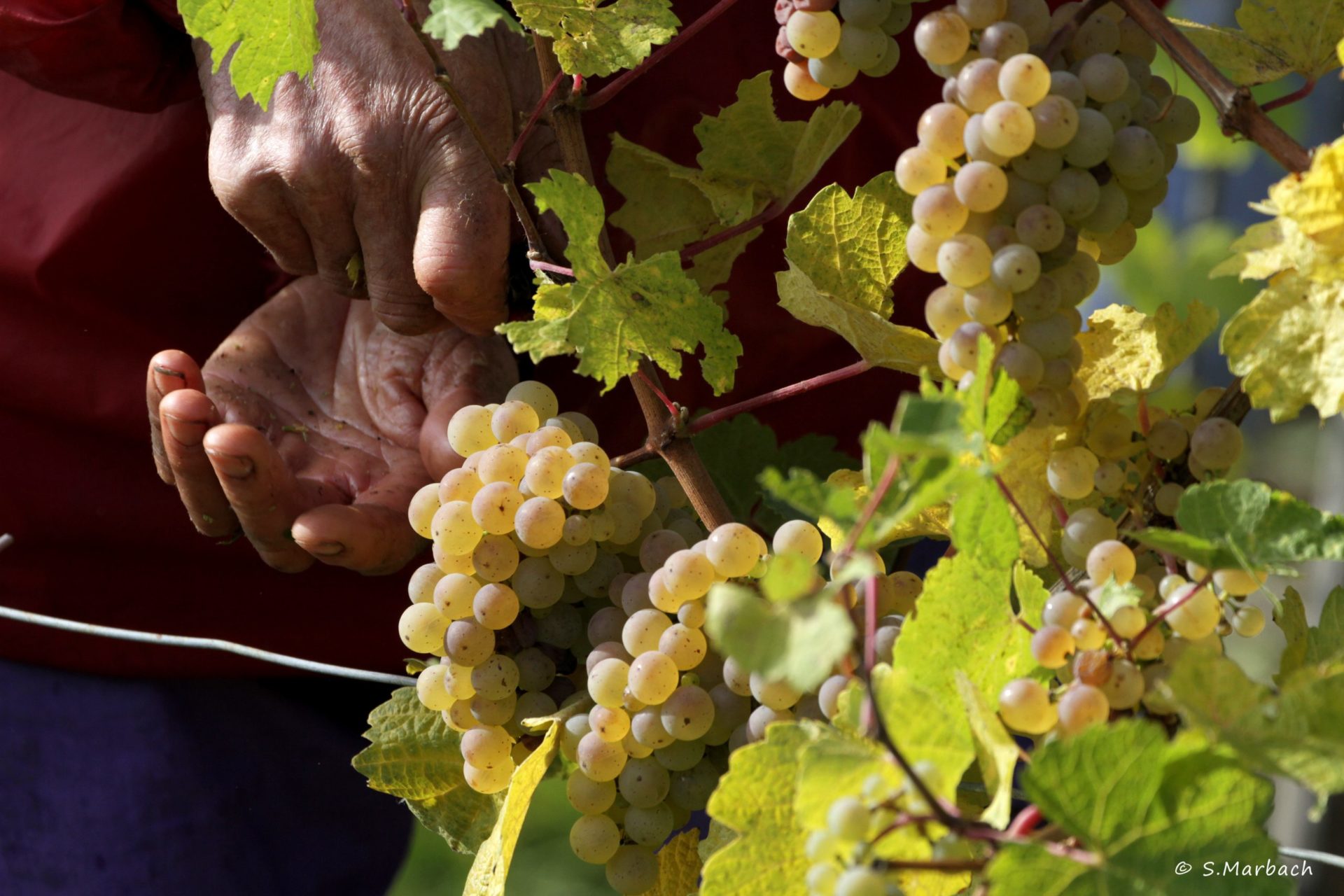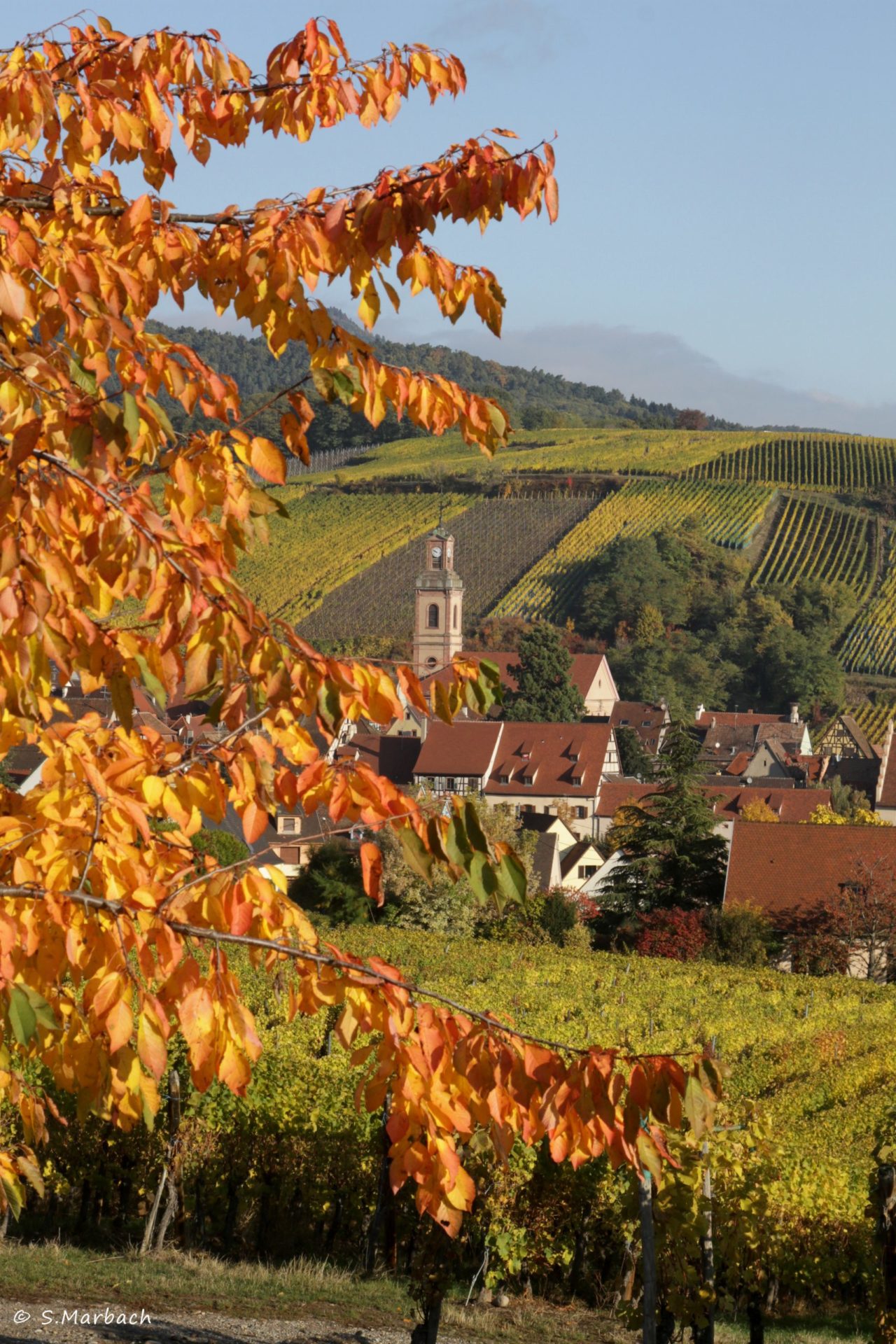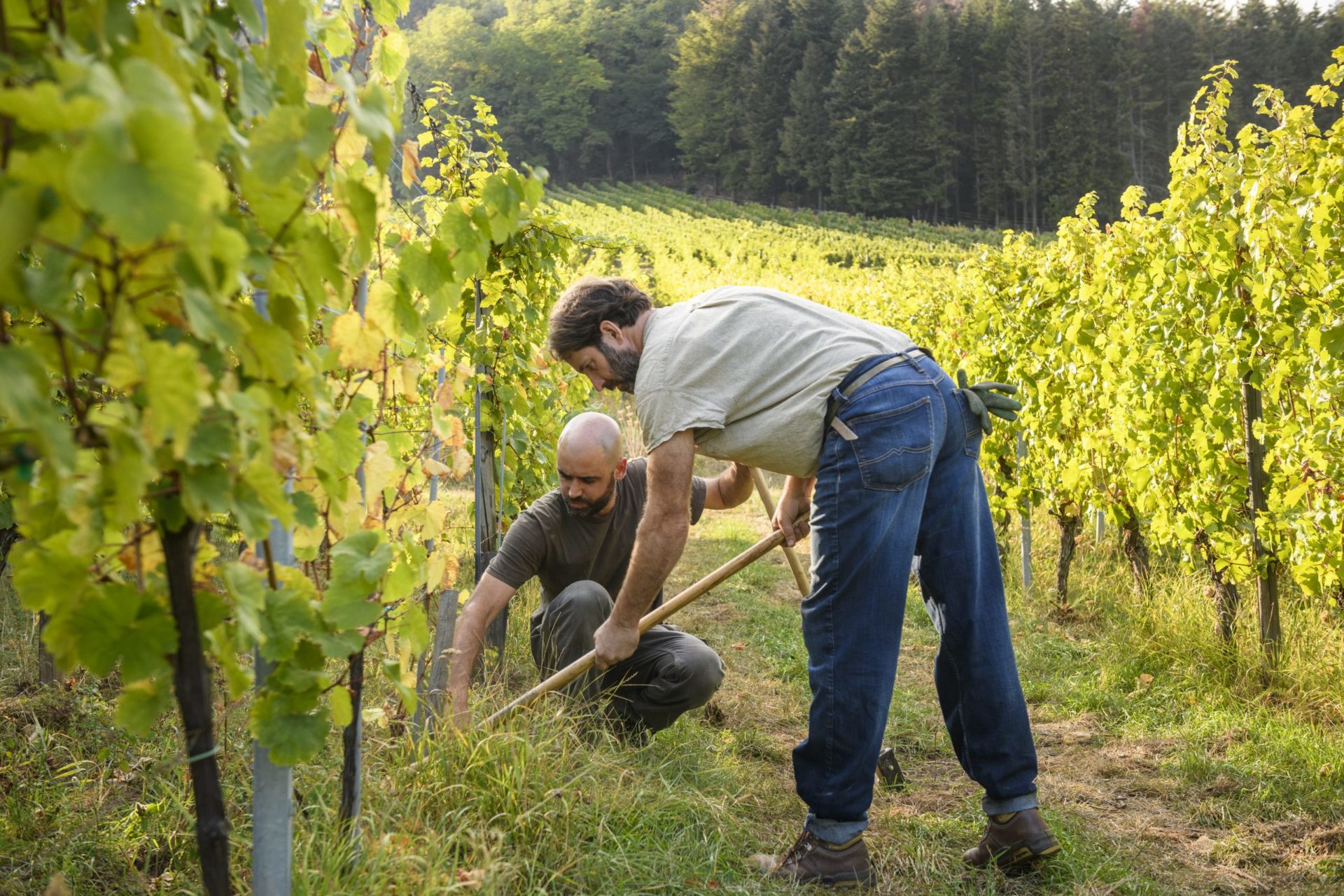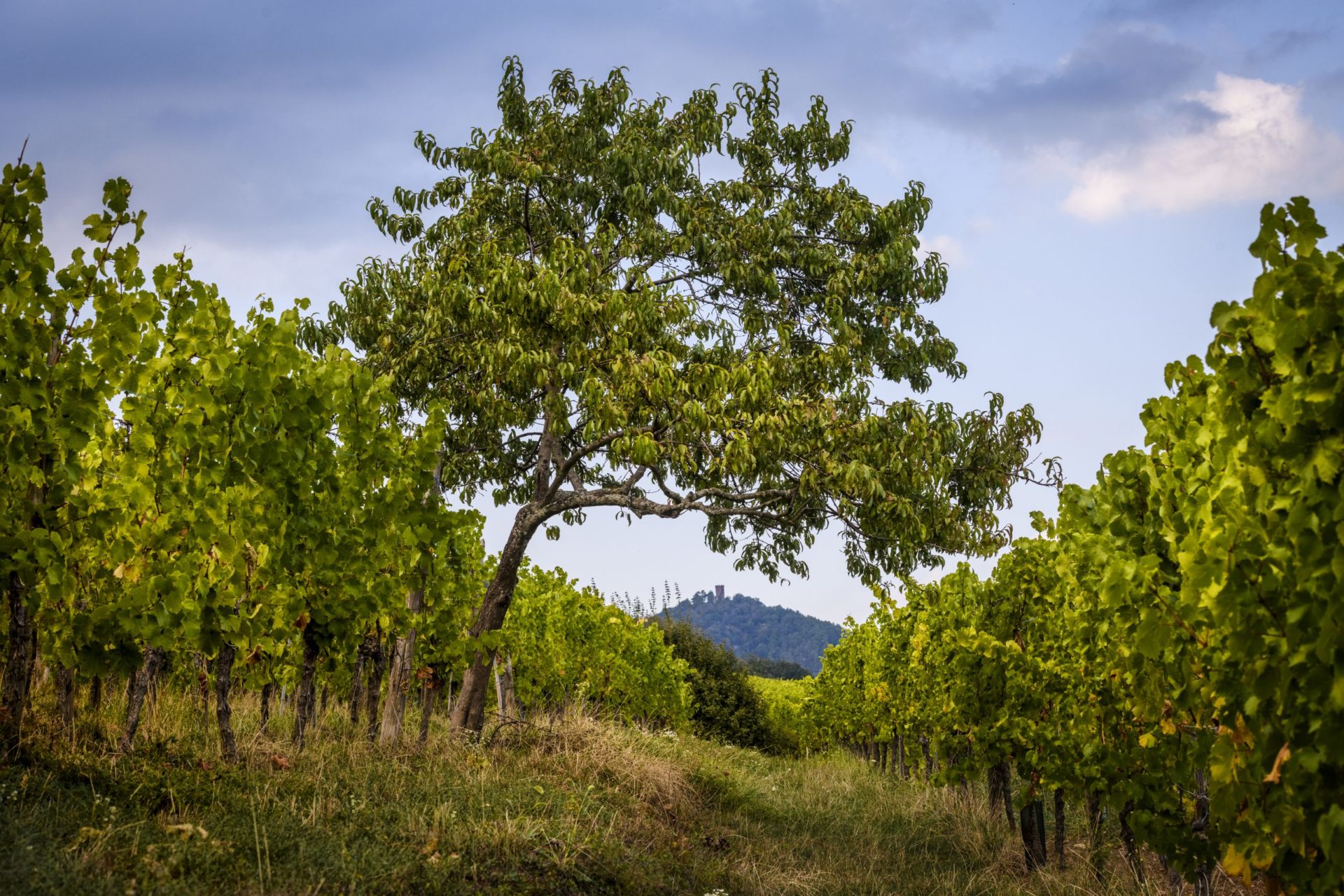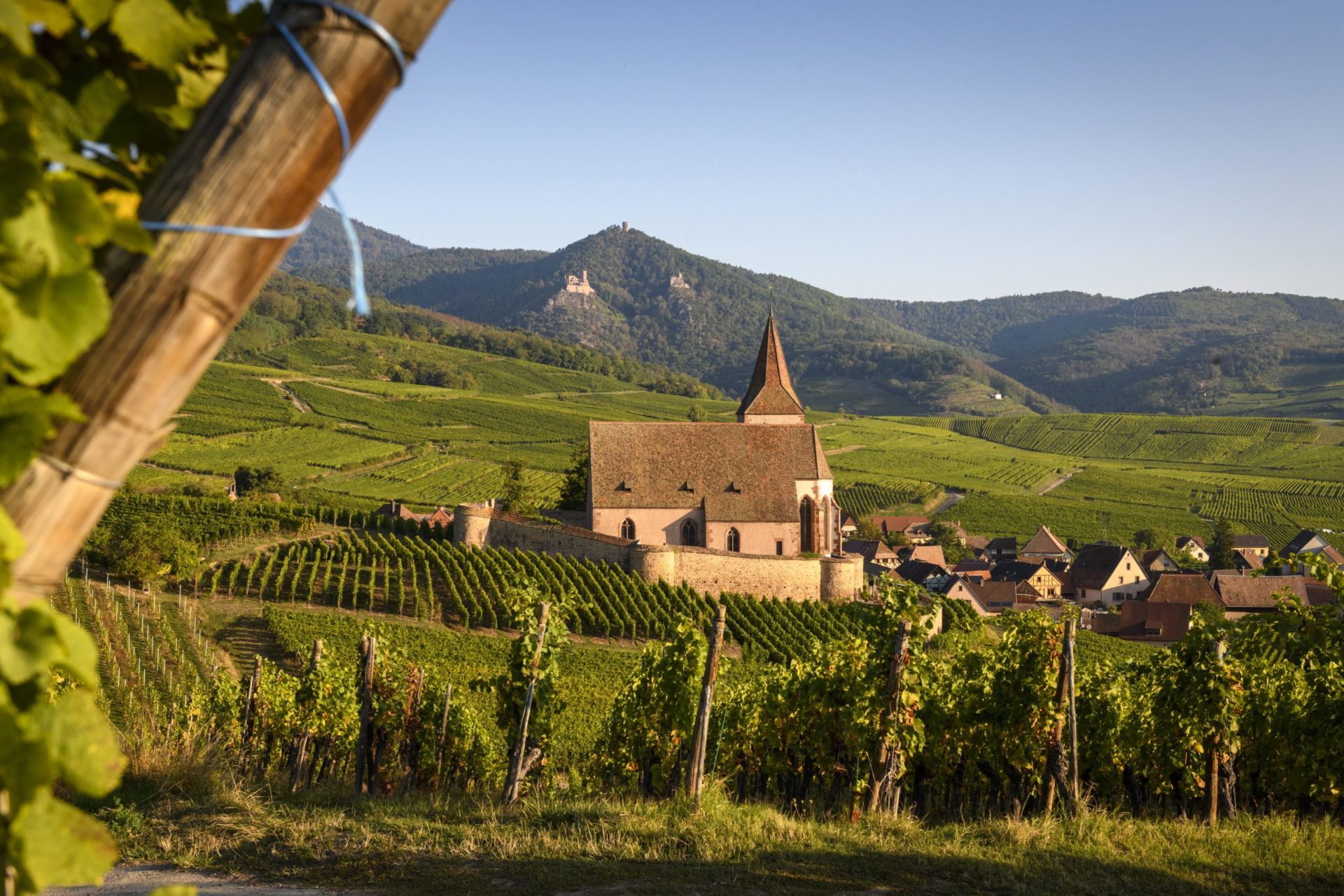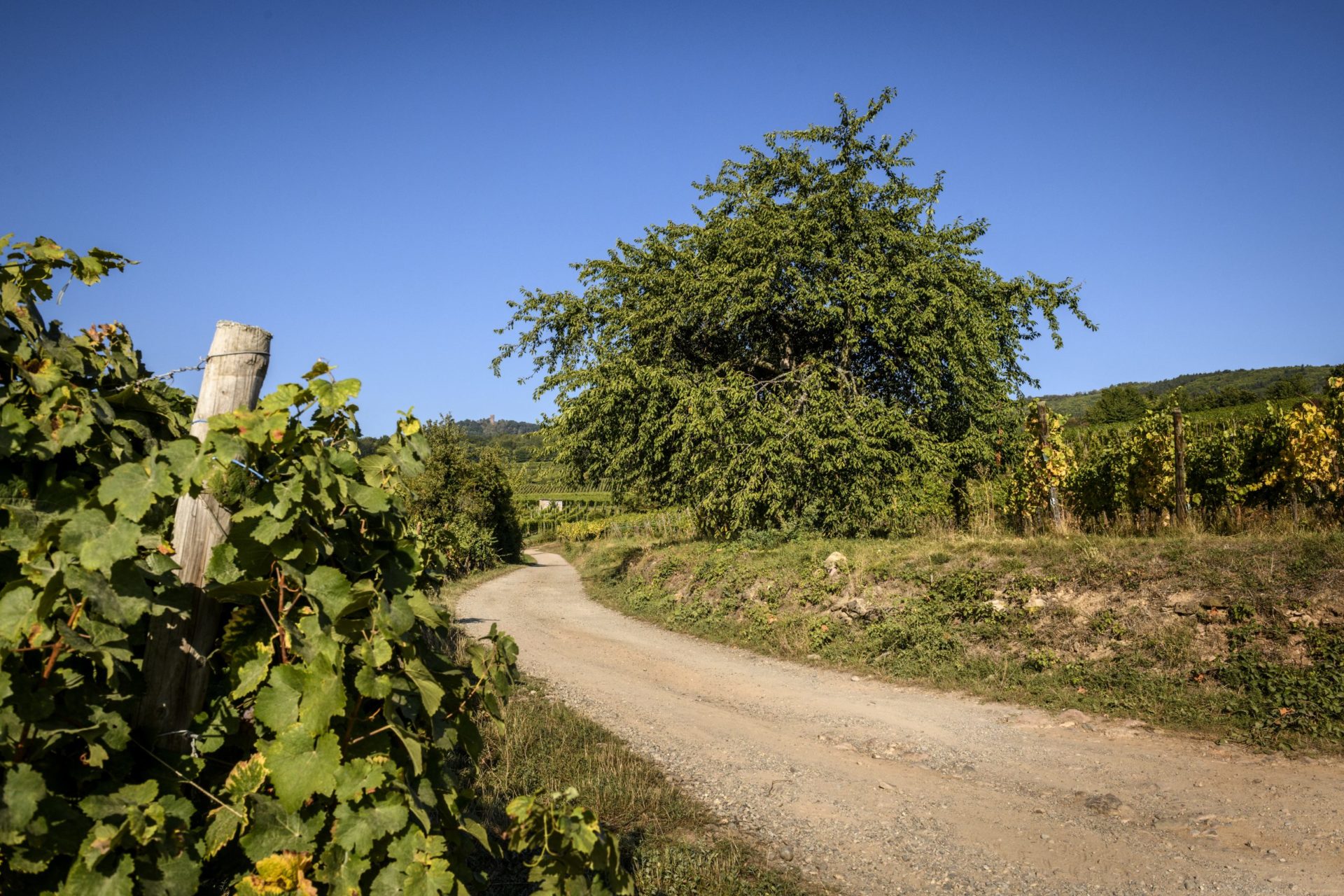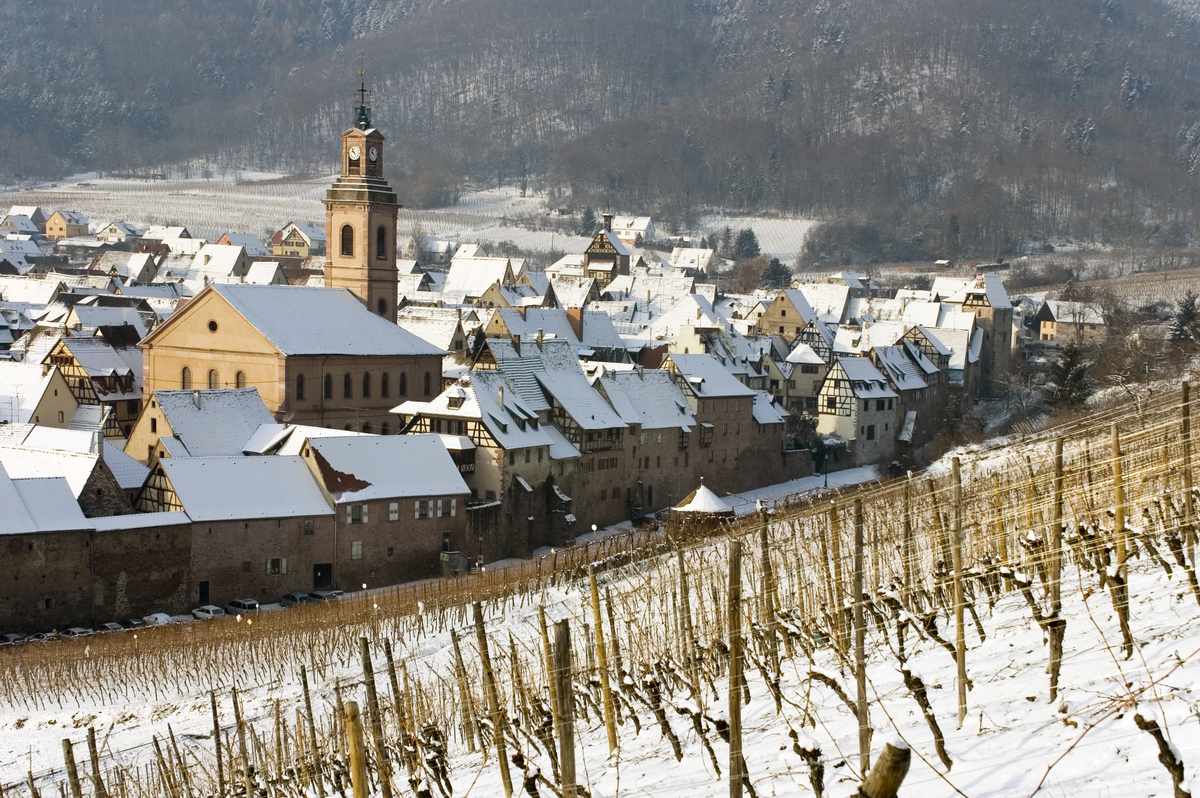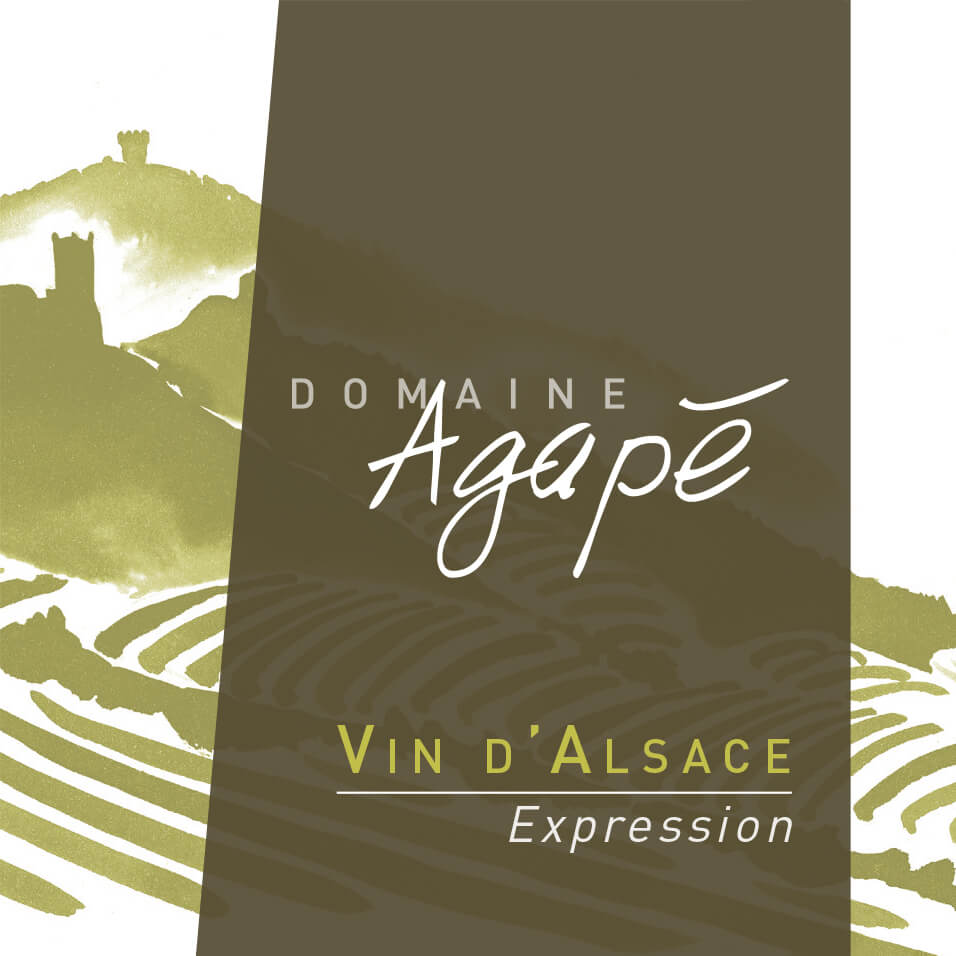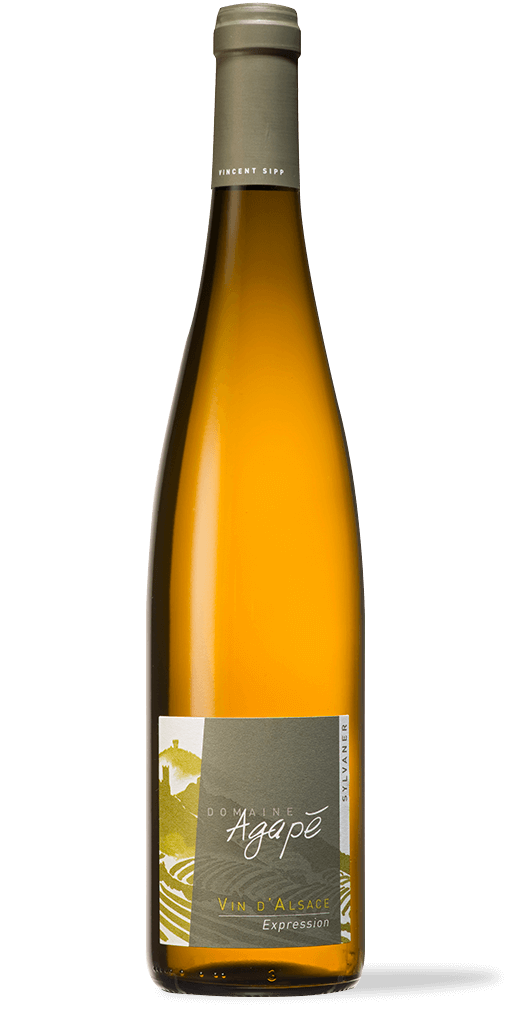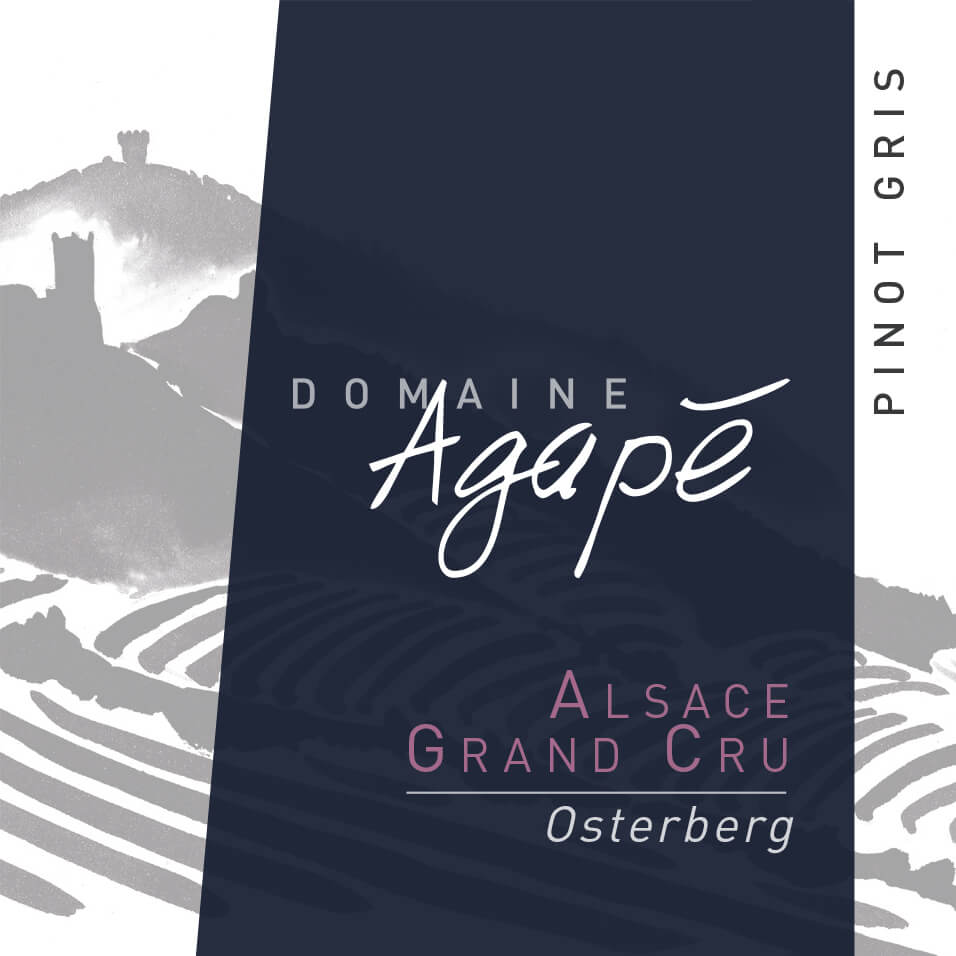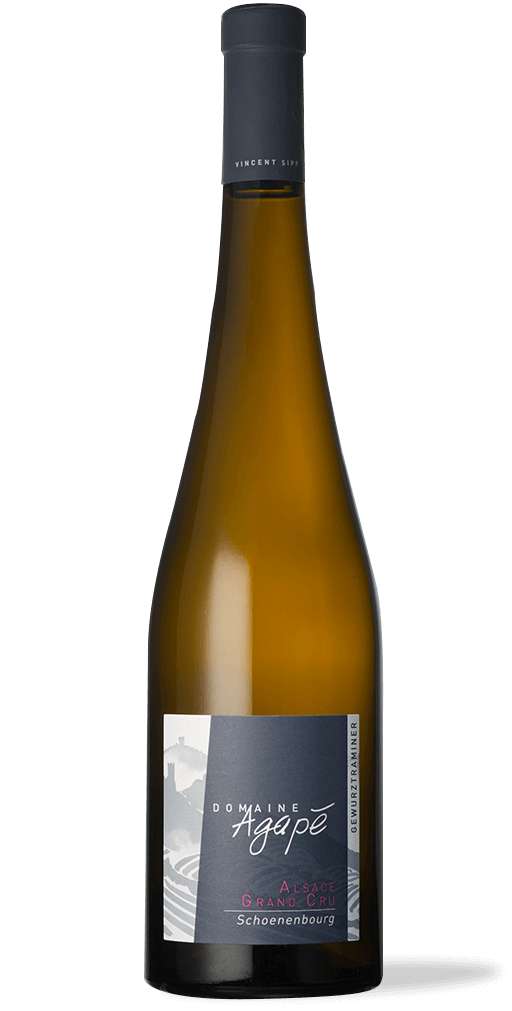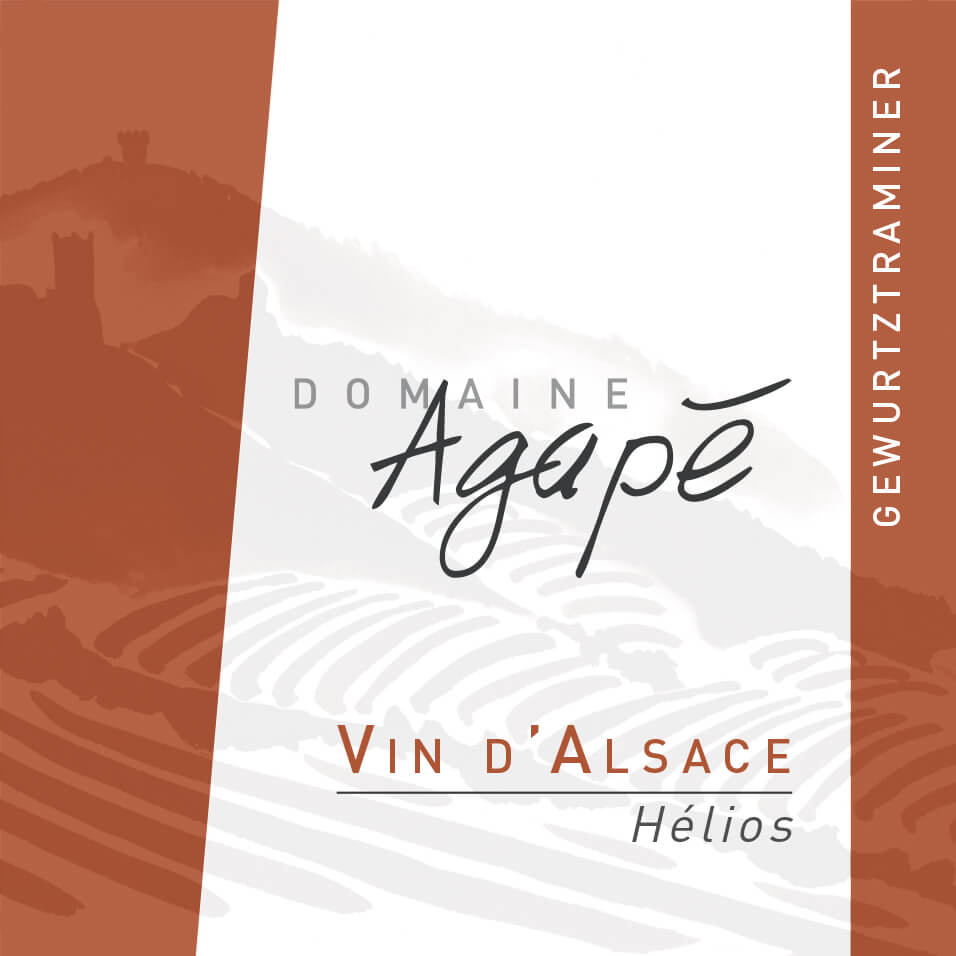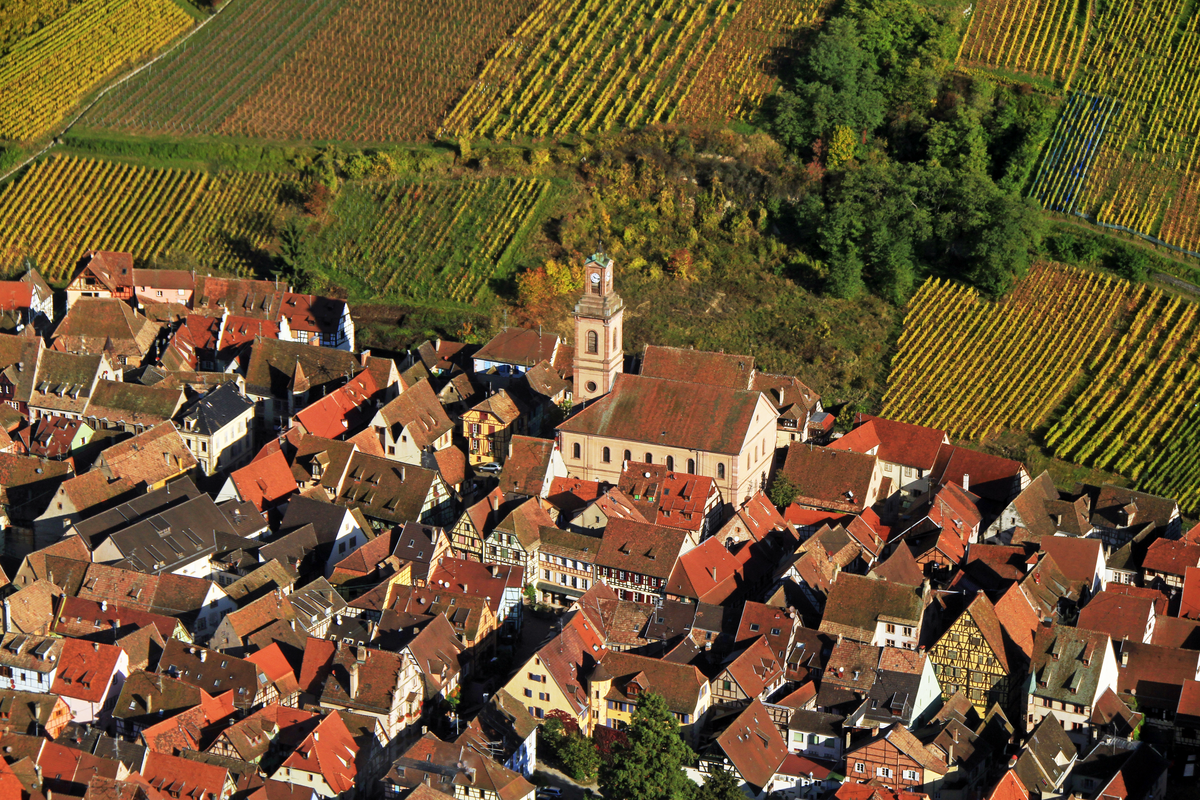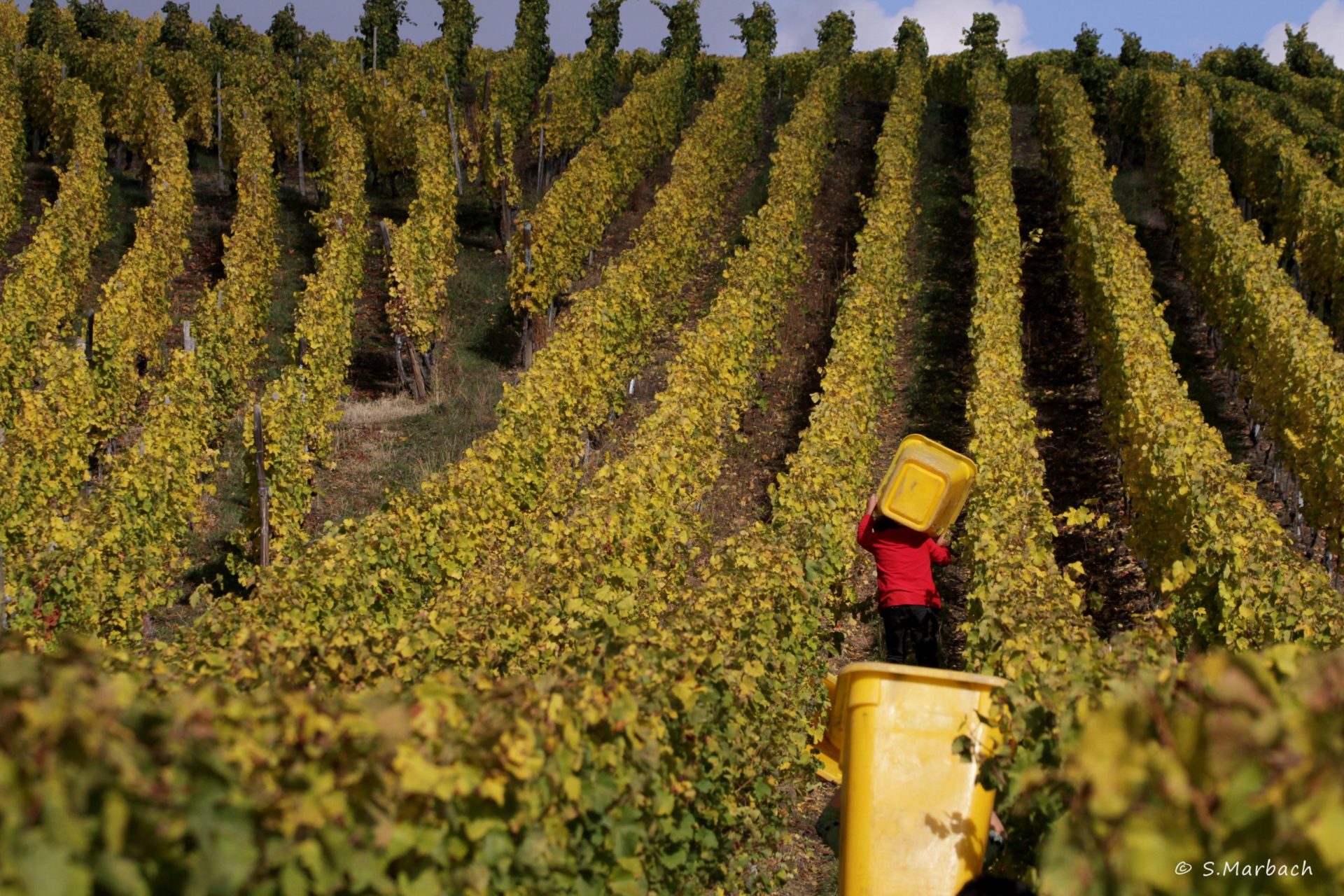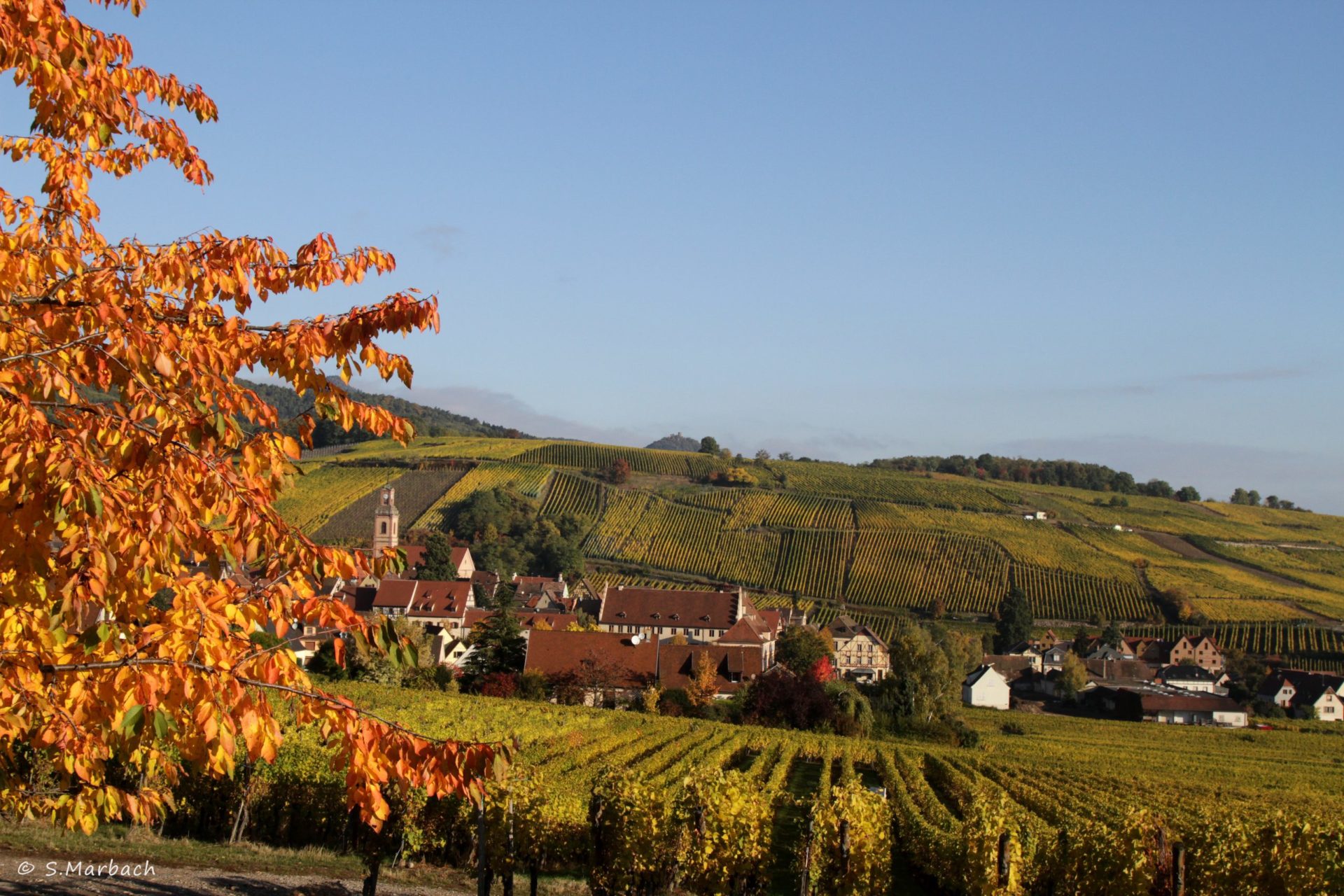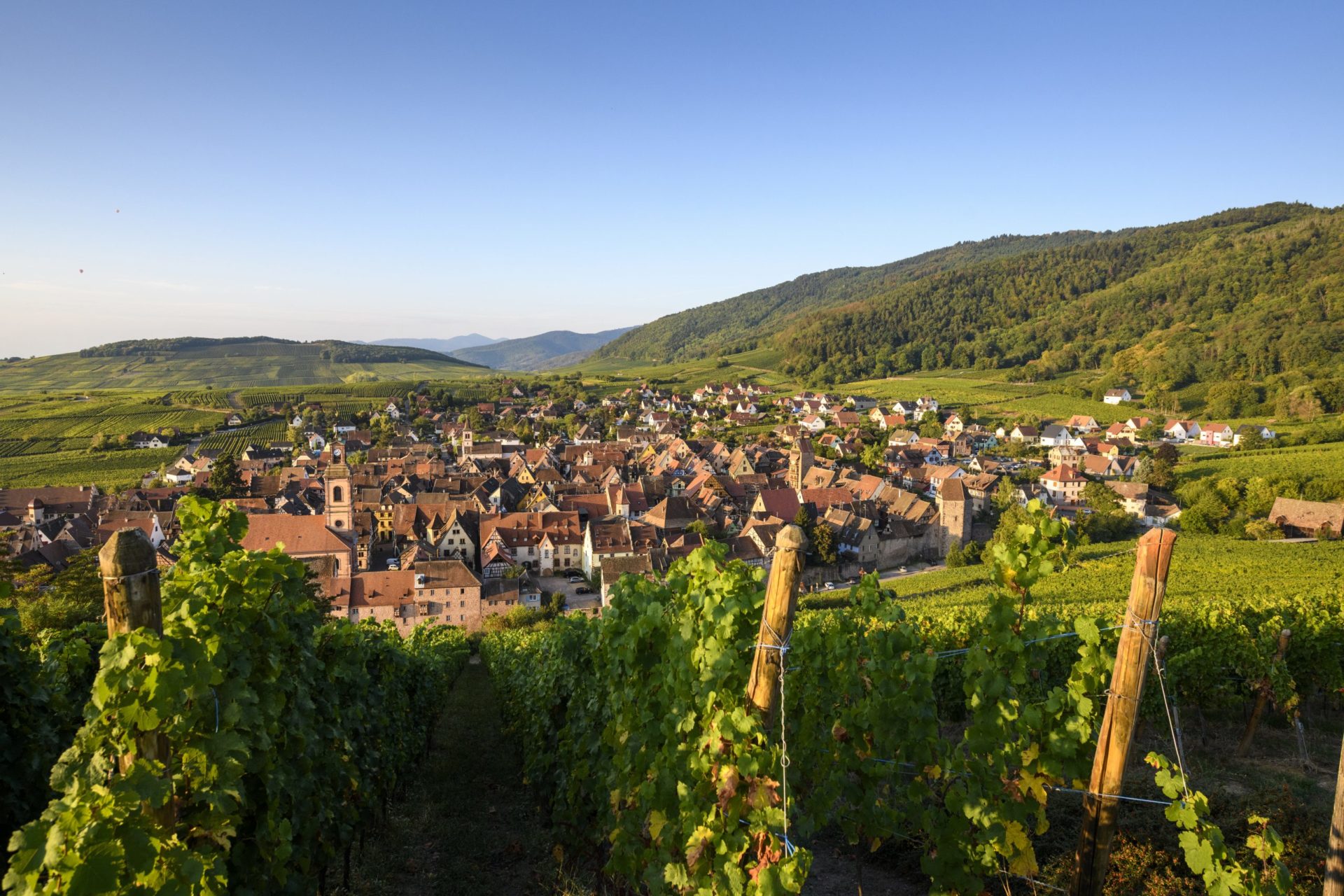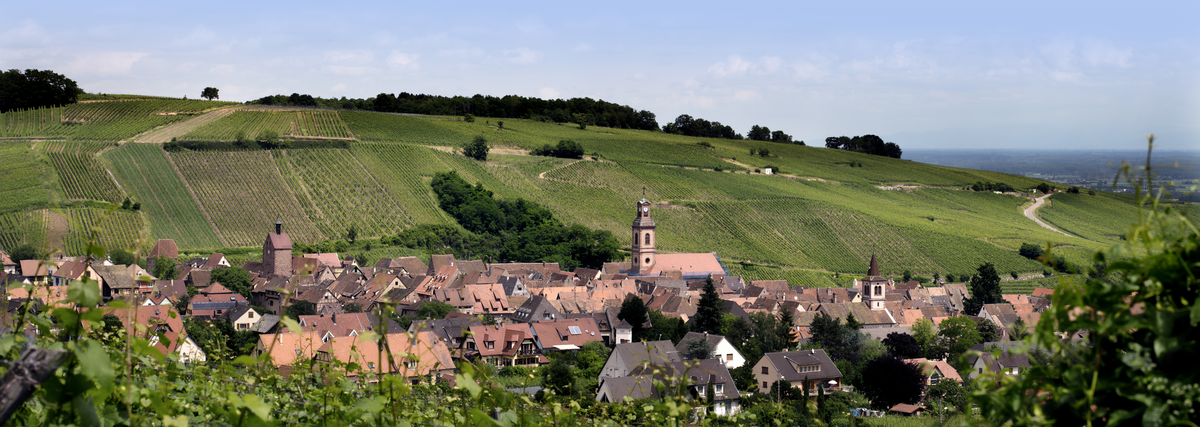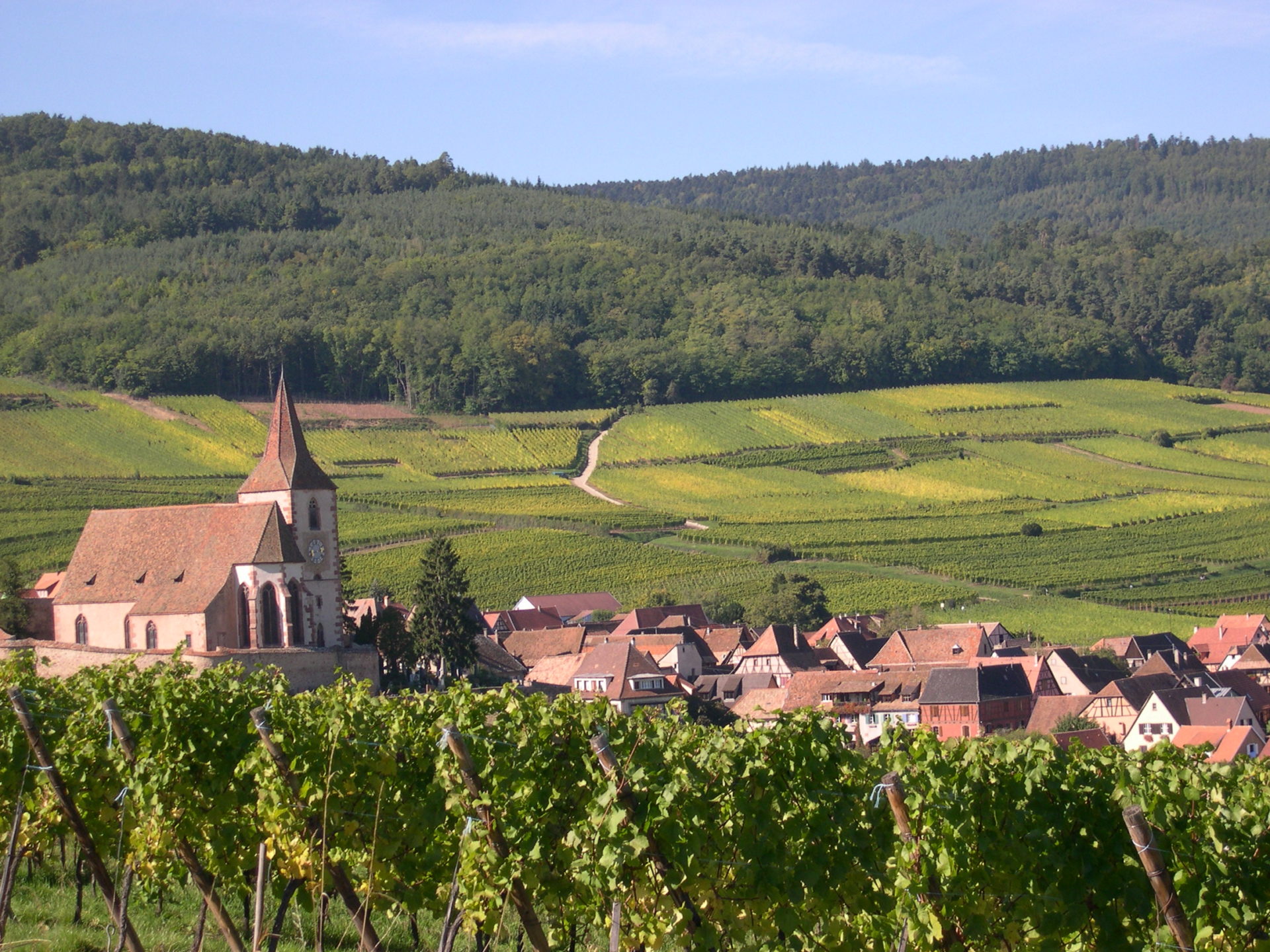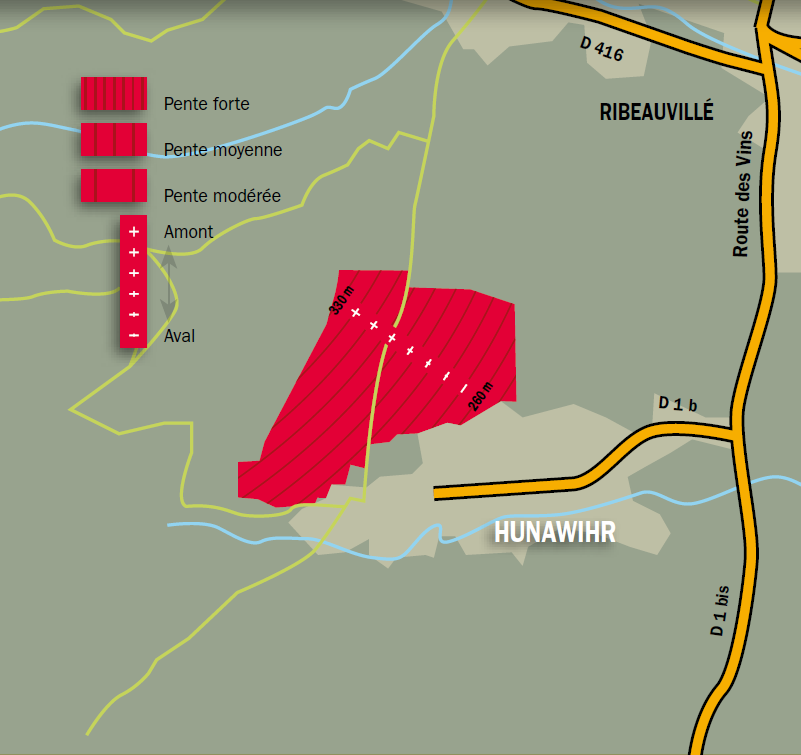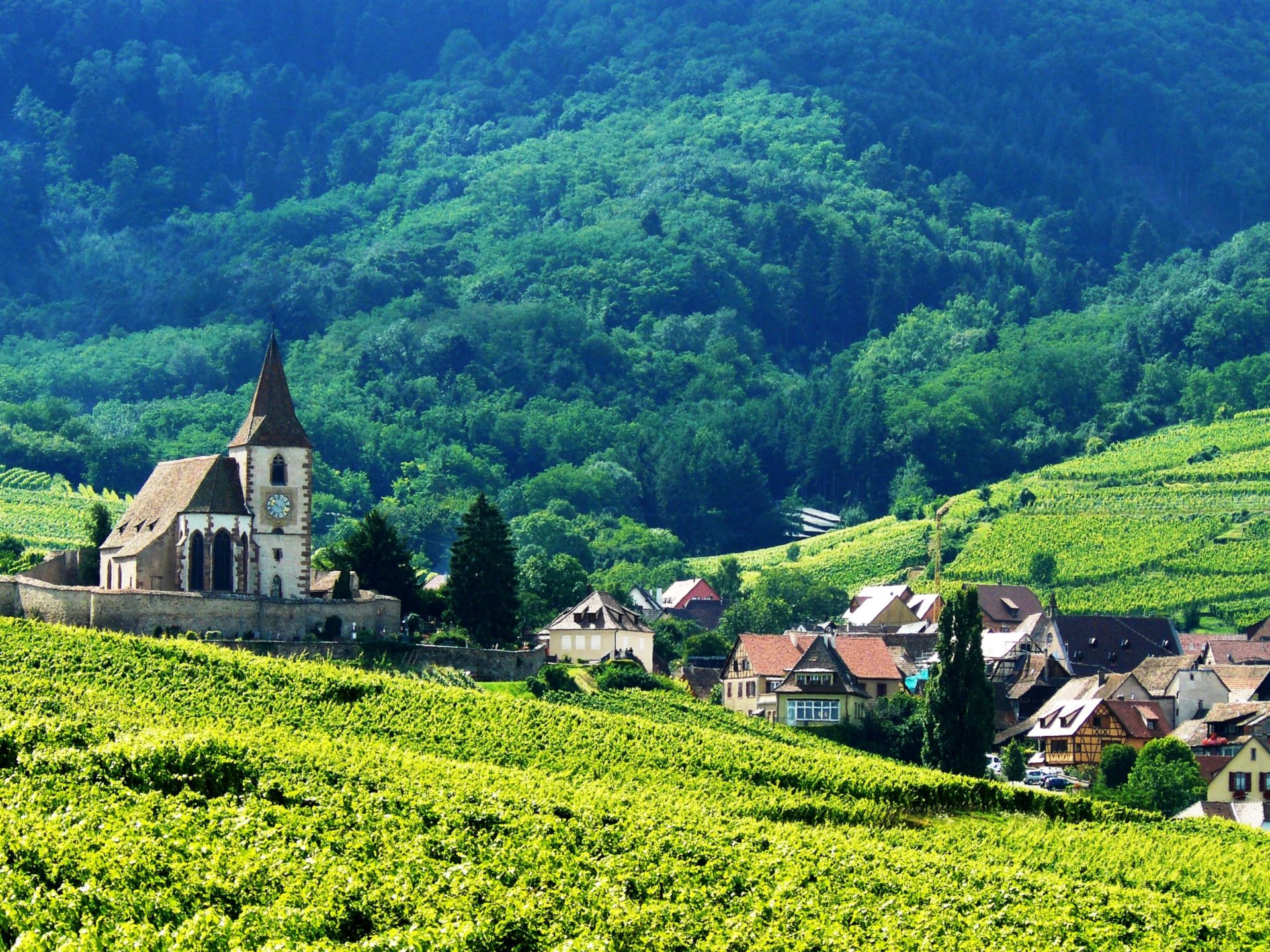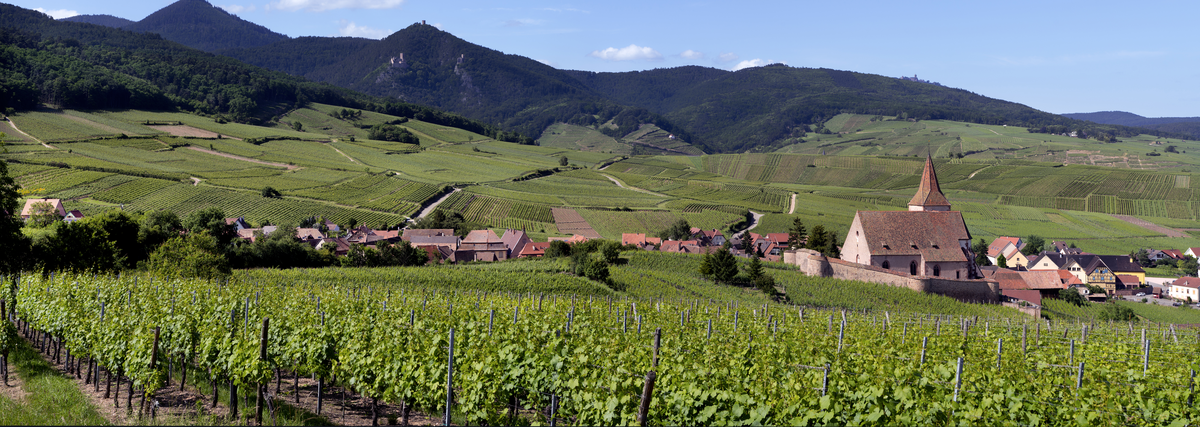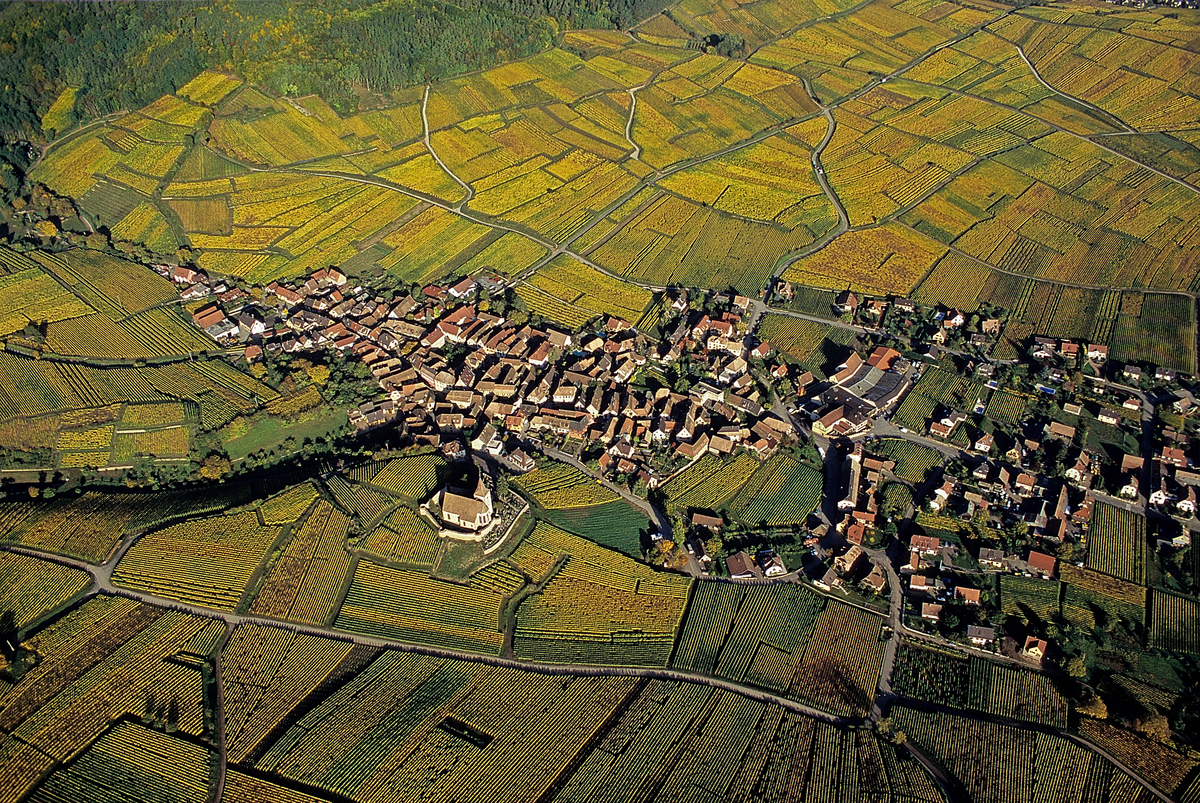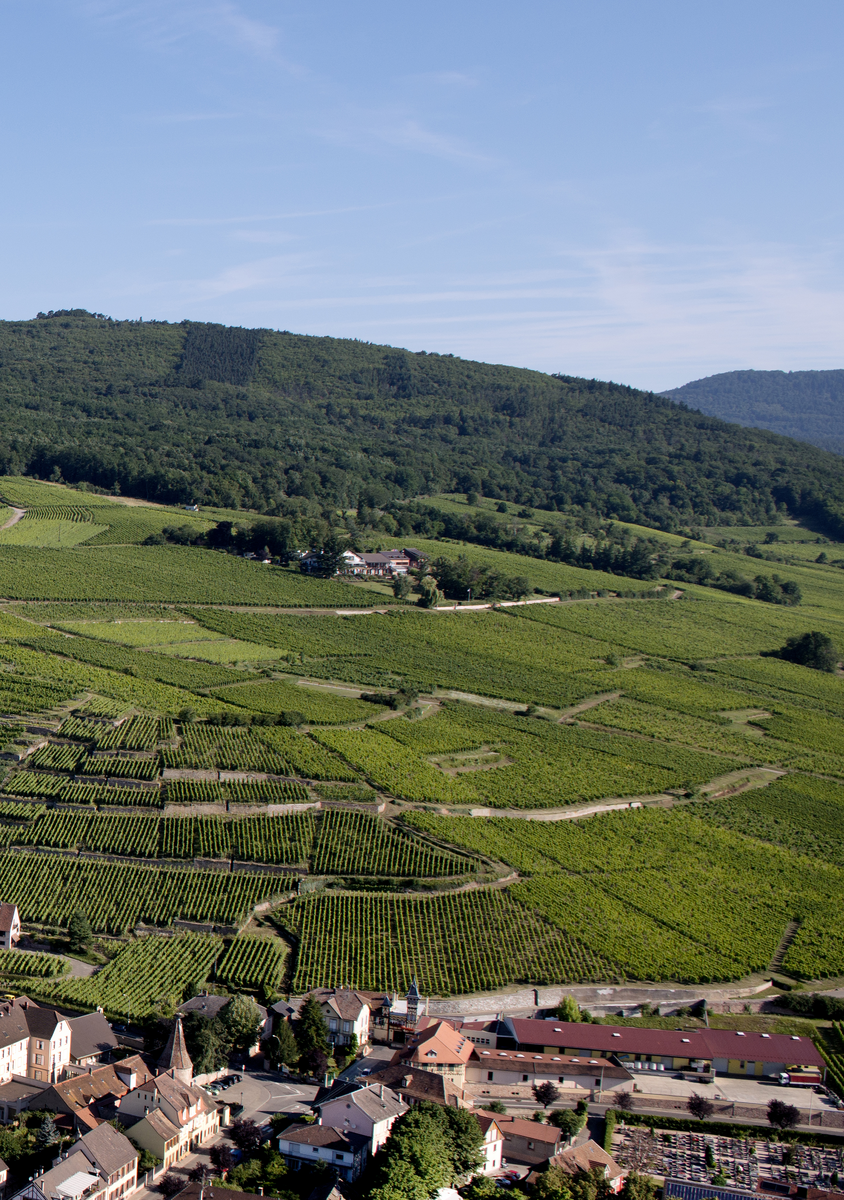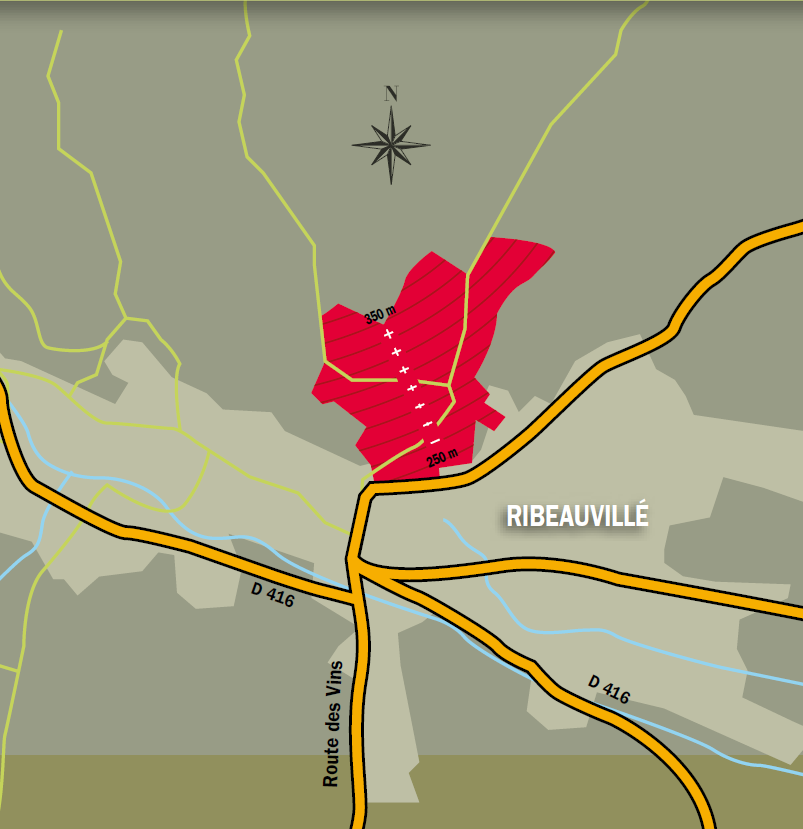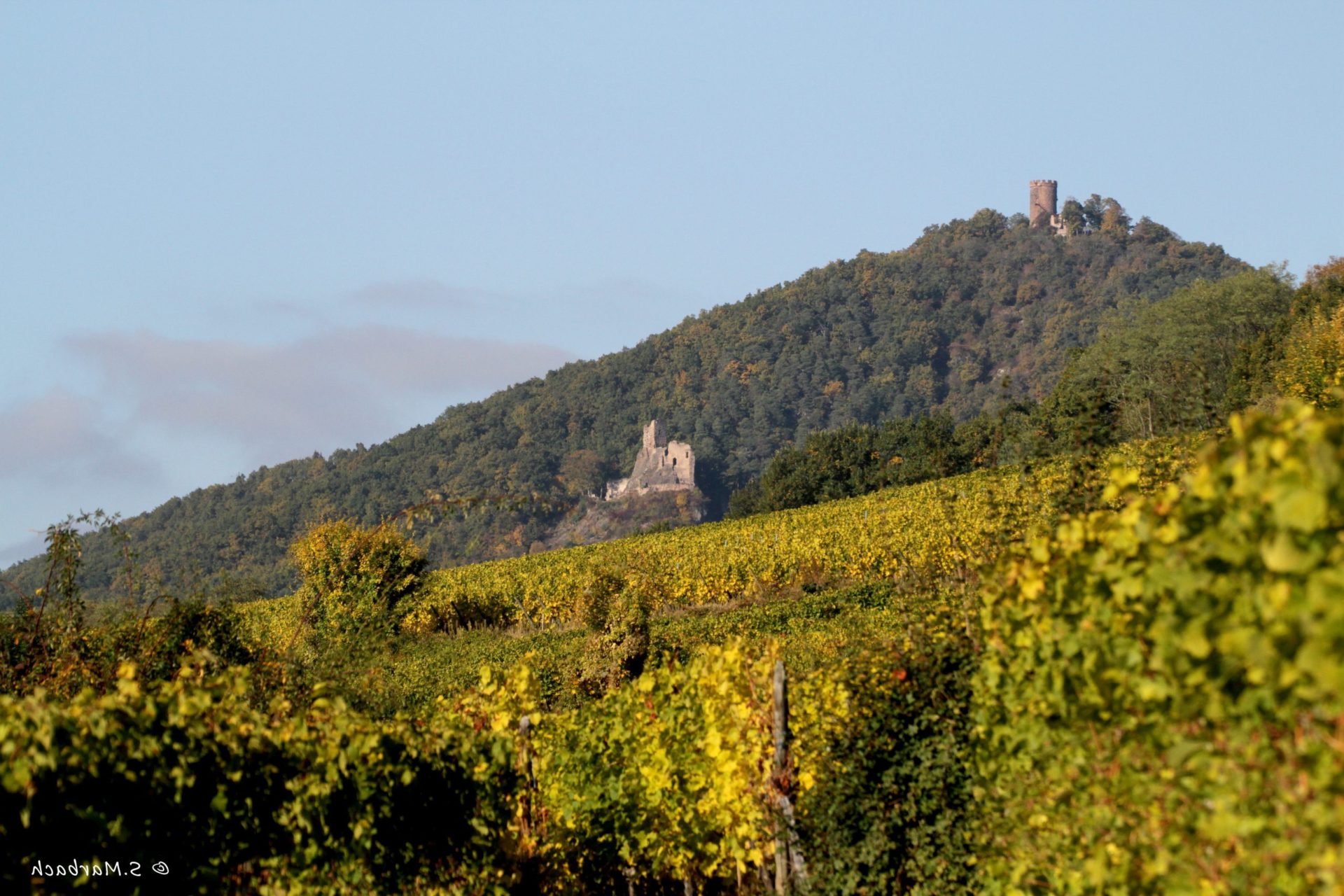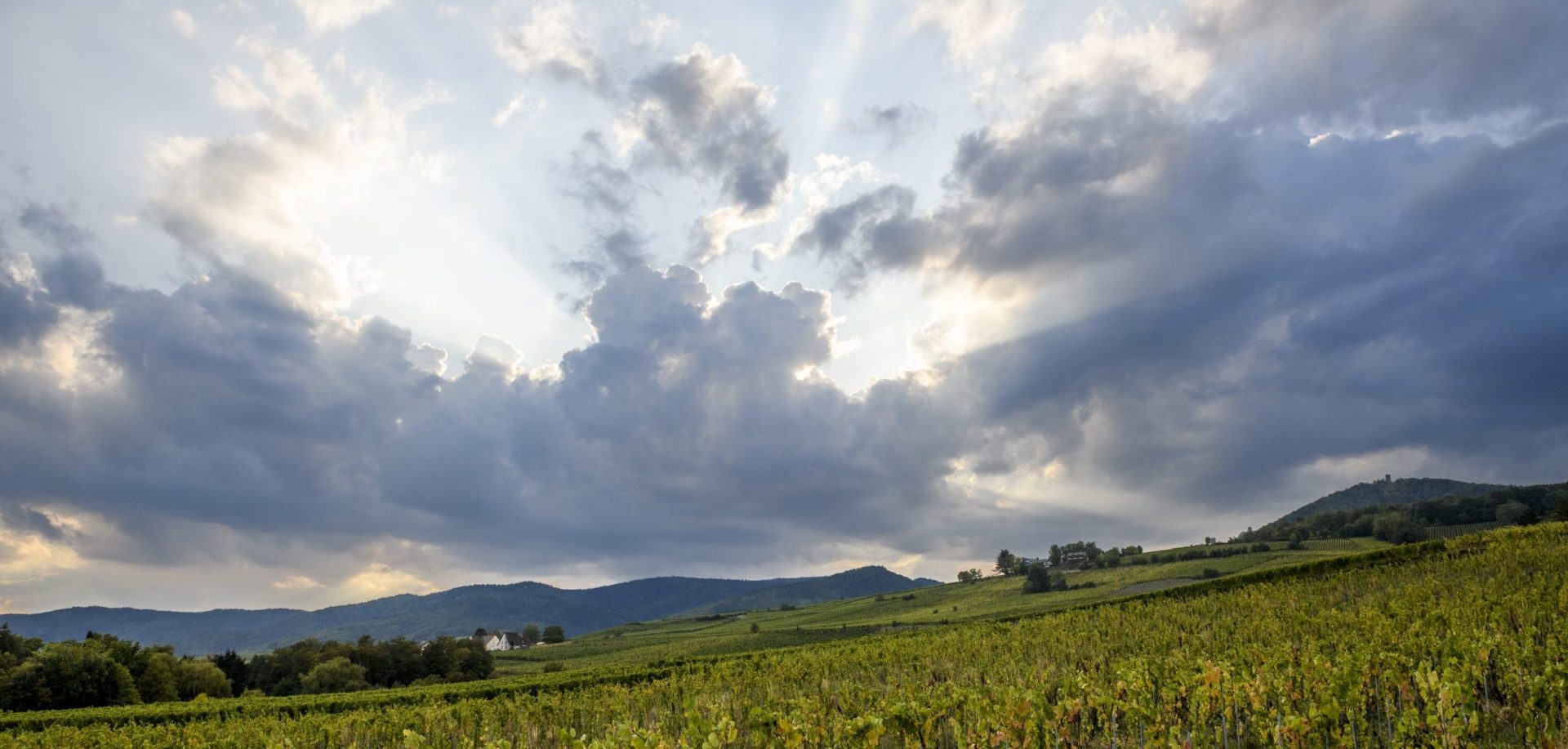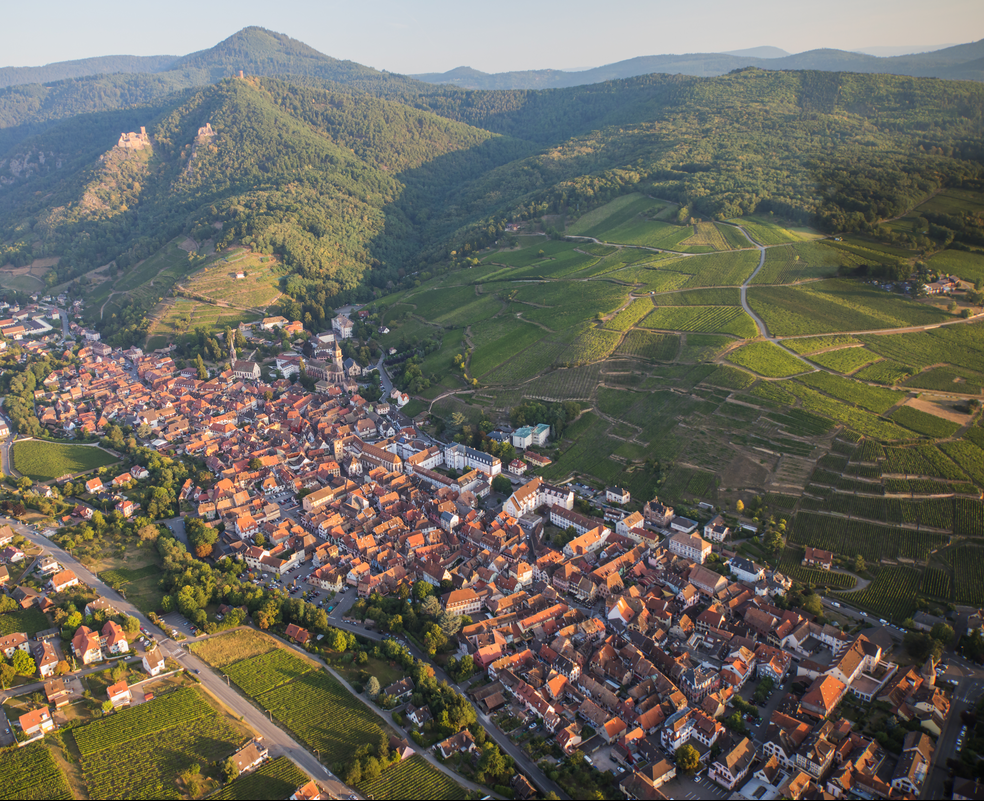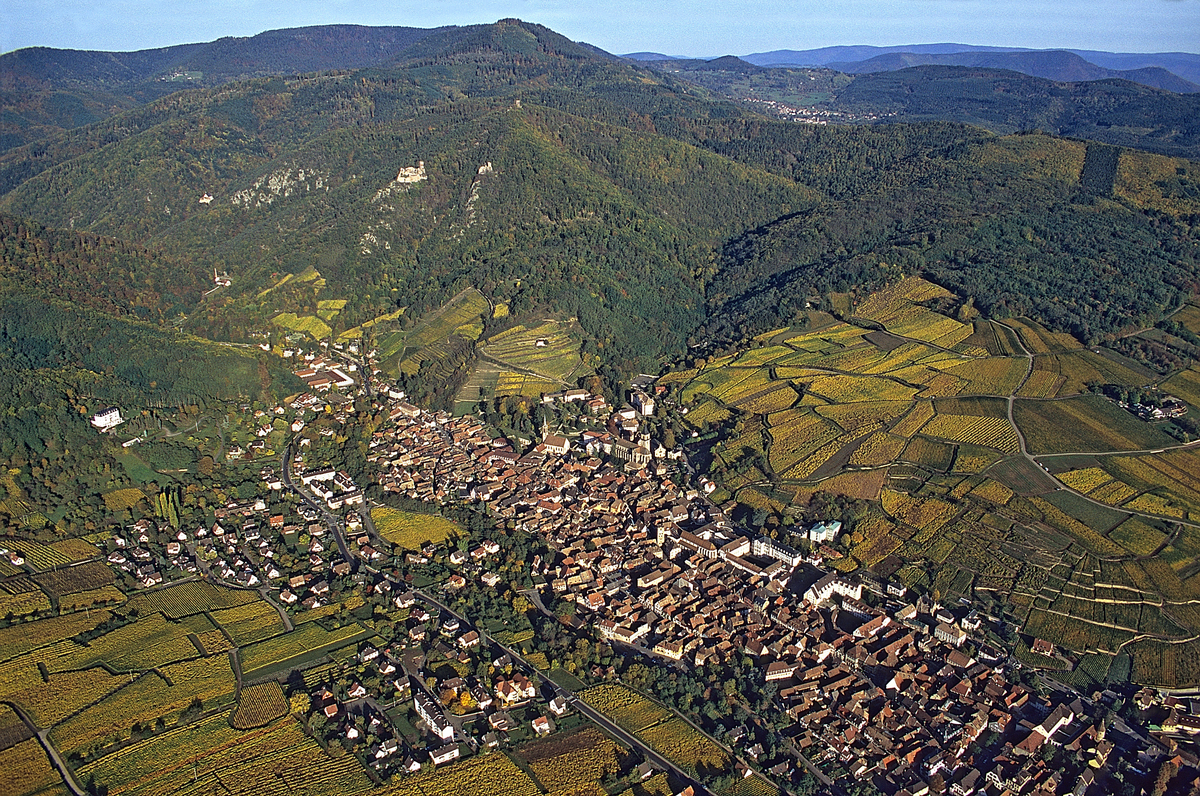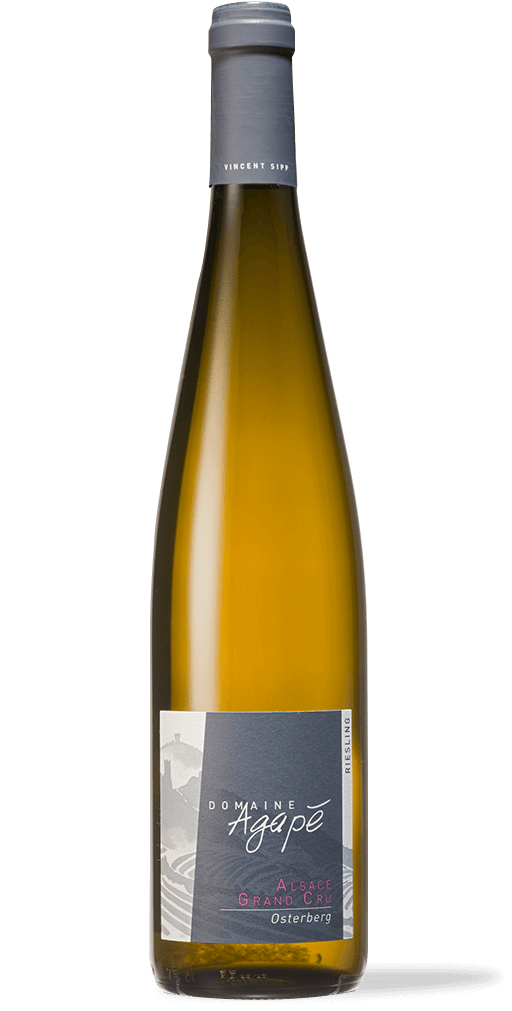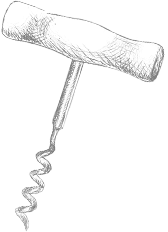
Our wines and our terroir(s)
Terroir(s)
-
The generosity of those who tend the vines and make the wine, the generosity of the earth in which the vines grow, the generosity of the sky and the sun which help the grapes ripen and the generosity of a thousand-year history and tradition which, over the centuries, has shaped an identity and an authenticity which we can share. – The Guide to the Brewers and Winemakers of Alsace


-
-
Our wines are divided into 3 families :
-
the Expression range, crisp and fruity, for drinking young;
-
the Grands Crus, which highlight the qualities of the terroir and can be considered as some of the most successful wines of the Riquewihr area;
-
the Hélios range, for late harvested wines of singular concentration.
-
-La Revue des Vins de France
-
The Expression range
Varietal wines
Dry, crisp, fruity wines which give full expression to the individual varietal they are made from.
The “Expressions” are wines that strongly reveal the characteristics of the single grape variety from which they are made (no blending of grape varieties).
Riesling, Pinot Blanc, Sylvaner, Pinot Gris, Gewurtztraminer or Pinot Noir are all grape varieties that we grow and with which we make a cuvée each time.
All the wines in the Expression range are vinified dry, and should be drunk young to retain their characteristic freshness and crispness.
The Terroirs
Lieux-dits & Grands Crus
Unique wines, made for laying down, which echo the character of the outstanding terroir they originate from.
Terroir wines (Vins de terroir) capture the essence of a specific terroir of superior quality. To obtain such wines, only grapes from a single location are pressed together.
Some of these location have extraordinary personalities and qualities which have earned them the rank of Grand Cru. They are the nobility of the Alsatian terroir, and represent less than 6% of the vineyard surface. The Grand Crus express the very essence of the terroir.
We are lucky enough to cultivate plots of land on three of these Grand Crus: the Schoenenbourg in Riquewihr, the Rosacker in Hunawihr and the Osterberg in Ribeauvillé.
Wines from the Jungholz area, located below the Grand Cru Osterberg, complete the range of the estate’s Vins de Lieux.
The Hélios range
Sweet wines
Wines are sweet and bursting with sunshine
The “Helios” are sweet wines made from grapes that have been raisined or covered with noble rot. Their production requires a rigorous manual sorting.
These wines are only produced during exceptional, sunny and dry vintages. There is no limit to their ageing.
The microclimate of Ribeauvillé and Riquewihr enjoys the lowest rainfall in France and features terroirs of recognised excellence.
The Guide to the Brewers and Winemakers of Alsace
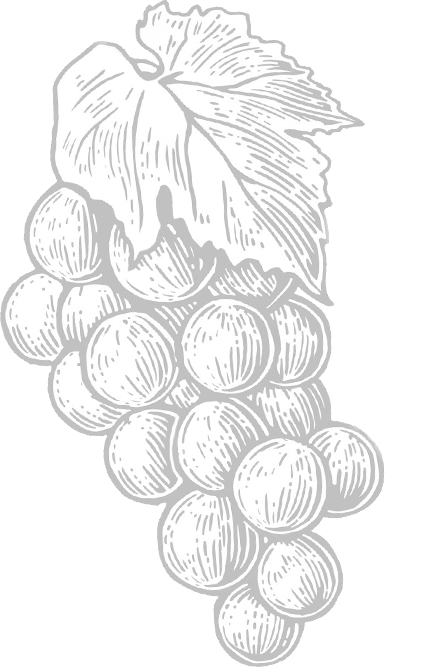
Grand cru
Schoenenbourg
To the north of Riquewihr, the vines run along the southern and south-eastern slopes of the Schoenenbourg hillside at an altitude of between 265 and 380 metres, on a fairly steep slope.
To the north of Riquewihr, the vines run along the southern and south-eastern slopes of the...
Commune of Riquewihr
The wines of the Grand Cru Schoenenbourg develop powerful and rich aromas, with a marked salinity. They are excellent wines for laying down. Everyone agrees that Riesling is the king grape variety on this terroir, but Gewurztraminer also expresses itself superbly, and gives wines with a very nice smoky and mineral character.
To the north of Riquewihr, the vines run along the south and south-east slopes of the Schoenenbourg hillside at an altitude of between 265 and 380 metres. The unique personality of this Cru comes from its ideal micro-climate (sunny slopes sheltered from the north wind) and its rich soil, composed of Keuper marl and gypsum, which strongly influences the personality of the wines produced.
Renowned since the High Middle Ages, the wines of Schoenenbourg were famous in all the countries of Northern Europe from the 16th century.
The great Swiss cartographer Merian mentioned it in 1644: “the Schoenenbourg where the noblest wine of this country grows…”. An opinion shared by the bourgeois and dignitaries of the Ancien Régime who, from the Middle Ages onwards, took pride in owning vines in this privileged location.
Grand cru
Rosacker
Situated on the heights of Hunawihr at an altitude of between 260 and 330 metres, this exceptional semi-late harvest terroir is notably influenced by its proximity to the forest and the Vosges mountains.
Situated on the heights of Hunawihr at an altitude of between 260 and 330 metres, this exceptional...
Commune of Hunawihr
To the north of Hunawihr, at an altitude of 260 to 330m, this east-south-east facing hillside is underlain by the upper Muschelkalk (shell limestone).
Our parcel is a very beautiful vineyard that belonged to my great-great grandfather, Jean-Jacques Mack. He had 8 children and his plots were divided between them. I bought this one in 2003. In this vineyard, the limestone blocks are outcropping: the soil pH is very high.
Here the forest and the proximity of the Vosges mountains generate a microclimate. In the evening, the vines cool down very quickly under the effect of a small wind that comes up from the plain because of the temperature difference in the forest. The dry climate and the shade provided by the Vosges mountains allow the grapes to ripen slowly and healthily. This gives the wines great aromatic purity (there is little botrytis here) as well as great complexity (linked to the slow maturation).
The limestone gives a smoky character that intensifies with age. Rosacker wines are pure and complex, without bitterness or toasted notes. The Riesling wines are dry, powerful and concentrated. They combine good acidity with ripe aromas, without a confected character. Their palate generally reveals an impressive salinity, which reinforces the tension of the wine. They are great wines for ageing, which really come into their own after a few years in the bottle.
Grand cru
Osterberg
In the Ribeauvillé area, bordered to the south by the "Osterbergweg" and to the west by the Grand Cru Geisberg, the Osterberg exposes its hillsides at an altitude of 250 to 350m on medium to steep slopes.
In the Ribeauvillé area, bordered to the south by the "Osterbergweg" and to the west by the Grand...
Commune of Ribeauvillé
In the Ribeauvillé area, bordered to the south by the “Osterbergweg” and to the west by the Grand Cru Geisberg, the Osterberg exposes its hillsides at an altitude of 250 to 350m on medium to steep slopes.
We own a little more than 2 ha on these slopes, planted with Riesling (50 ares), Pinot Gris (50 ares), Pinot Noir (1 ha, the vine that makes up the “B” vintage) and a few Sylvaner vines.
On these plots, several factors influence the typicality of the wines:
– the altitude allows for over-ripening without the risk of rotting
– the eastern exposure leads to high acidity and freshness
– light soils with 15-20% clay and the rest silt and sand.
The wines we produce here are full-bodied and elegant, with fruit and minerality. Often, the advanced maturity offers a full-bodied texture, which melts into a chiselled acidity.


